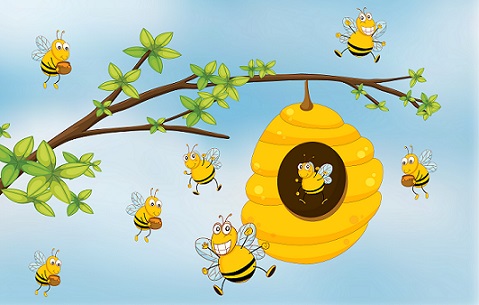{{ article.displayTitle }}
| | {{ 'ml-lesson-number-slides' | message : article.intro.bblockCount }} |
| | {{ 'ml-lesson-number-exercises' | message : article.intro.exerciseCount }} |
| | {{ 'ml-lesson-time-estimation' | message }} |
Catch-Up and Review
Here are a few recommended readings before getting started with this lesson.
LaShay's Piggy Bank
LaShay is fascinated by numbers and how she can buy her favorite things. She is currently saving money to buy a used 4K drone.

Help LaShay answer the following questions to support her math skills. Doing so will help her improve her saving plan.
Compatible Numbers


| Quotients | Exact Value | Use Compatible Numbers | Estimate |
|---|---|---|---|
| 615÷8 | 76.875 | 640÷8 | 80 |
| 36÷11.25 | 3.2 | 36÷12 | 3 |
| 52.82÷4.75 | 11.12 | 50÷5 | 10 |
Estimating the Number of Dimes in Piggy Bank
LaShay decides to use one of the all-time classic methods of saving money — a piggy bank! She then weighs it. All of the coins in the bank add up to 137.79 grams.

Hint
Divide the total weight of all the money in the piggy bank by the weight of a dime. Then, round the weight of a dime to a whole number.
Solution
Dividing Decimals
When dividing decimals, the divisor is changed to a whole number. This requires multiplying the divisor and the dividend by the same power of 10. First, write the division using long division notation. The dividend is 58.46 and the divisor is 3.7.


Start by dividing the whole number part of the dividend by the divisor.


How Many Hours Should LaShay Work?
LaShay needs $279.99 to buy the drone. She has already saved $125.75 up to this point. She then decided to mow her neighbor's lawn to make the rest of money she needs. Her neighbor agrees to pay her $9.25 per hour.
Hint
Solution


How Far Does the Drone Go?

Her grandfather, who used to be a beekeeper, tells LaShay the following.
|
So you want to approximate the number of bees in that hive huh? Well, count the number of bees that leave the hive in one minute. Then multiply it by 3 and divide by 0.014. |
Hint
Solution



Finding the Quotient of Two Decimal Numbers
Divide the decimal numbers. Make sure that the decimal point is placed correctly. Round the answer to two decimal places, if necessary.

Money in the Piggy Bank
When dividing decimals, the divisor is converted into a whole number by multiplying it by a power of 10. However, the dividend must also be multiplied by the same power of 10 to keep the value of the quotient the same. Now take a look at LaShay's piggy bank problem.

Hint
Solution



| Dividend | Divisor | Quotient |
|---|---|---|
| 3000 | 100 | 30 |
| 300 | 10 | 30 |
| 30 | 1 | 30 |
| 3 | 0.1 | 30 |
| 0.3 | 0.01 | 30 |
The numbers in the first columns get smaller downwards by a factor of 10. The same is true for the numbers in the second column. However, the quotient always stays the same. Therefore, when the dividend and divisor both increase by the same factor of 10, the quotient remains the same.

